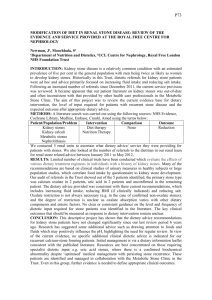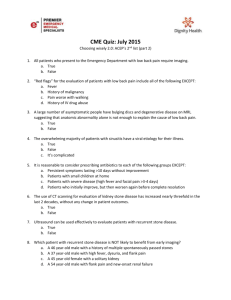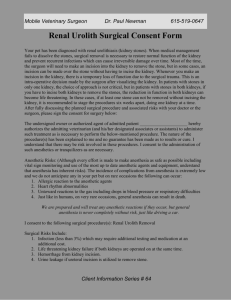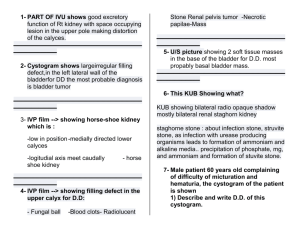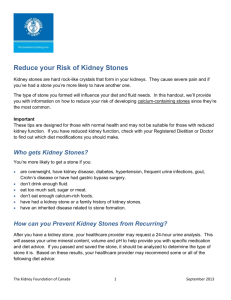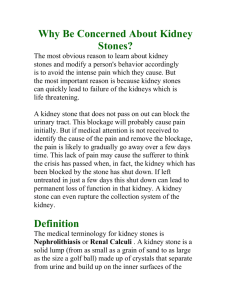DOCX ENG
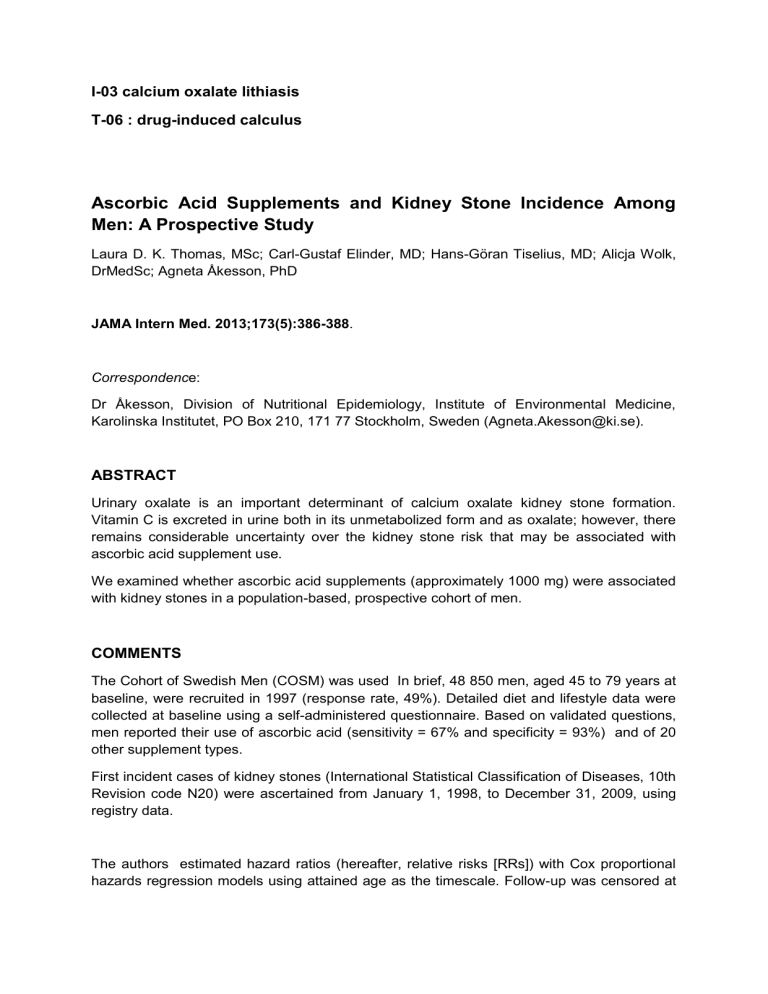
I-03 calcium oxalate lithiasis
T-06 : drug-induced calculus
Ascorbic Acid Supplements and Kidney Stone Incidence Among
Men: A Prospective Study
Laura D. K. Thomas, MSc; Carl-Gustaf Elinder, MD; HansGöran Tiselius, MD; Alicja Wolk,
DrMedSc; Agneta Åkesson, PhD
JAMA Intern Med. 2013;173(5):386-388 .
Correspondenc e:
Dr Åkesson, Division of Nutritional Epidemiology, Institute of Environmental Medicine,
Karolinska Institutet, PO Box 210, 171 77 Stockholm, Sweden (Agneta.Akesson@ki.se).
ABSTRACT
Urinary oxalate is an important determinant of calcium oxalate kidney stone formation.
Vitamin C is excreted in urine both in its unmetabolized form and as oxalate; however, there remains considerable uncertainty over the kidney stone risk that may be associated with ascorbic acid supplement use.
We examined whether ascorbic acid supplements (approximately 1000 mg) were associated with kidney stones in a population-based, prospective cohort of men.
COMMENTS
The Cohort of Swedish Men (COSM) was used In brief, 48 850 men, aged 45 to 79 years at baseline, were recruited in 1997 (response rate, 49%). Detailed diet and lifestyle data were collected at baseline using a self-administered questionnaire. Based on validated questions, men reported their use of ascorbic acid (sensitivity = 67% and specificity = 93%) and of 20 other supplement types.
First incident cases of kidney stones (International Statistical Classification of Diseases, 10th
Revision code N20) were ascertained from January 1, 1998, to December 31, 2009, using registry data.
The authors estimated hazard ratios (hereafter, relative risks [RRs]) with Cox proportional hazards regression models using attained age as the timescale. Follow-up was censored at
date of kidney stone diagnosis, death, or end of follow-up, whichever occurred first. The
Schoenfeld residual test indicated no violation of the proportional hazard assumption.
Dose-response was assessed using the frequency-of-use data, which were available for
91.5% of ascorbic acid users. The linear trend across categories was tested using the median tablet usage within each group as a continuous variable
During 11 years of follow-up we ascertained 436 first incident cases of kidney stones.
Ascorbic acid use was associated with a statistically significant 2-fold increased risk (Table).
In contrast, multivitamin use was not associated with kidney stone risk (RR, 0.86 [95% CI,
0.62-1.19]).
In conclusion, these results indicate that high-dose ascorbic acid supplements —one of the most commonly used vitamin preparations —are associated with a dose-dependent 2-fold increased risk of kidney stone formation among men.
Pr. Jacques CHANARD
Professor of Nephrology





